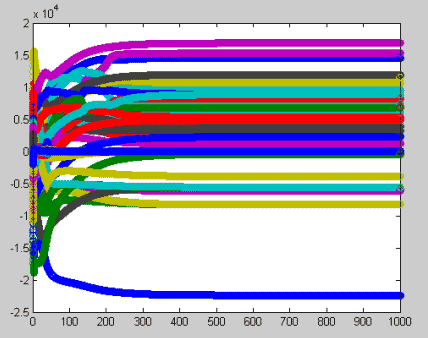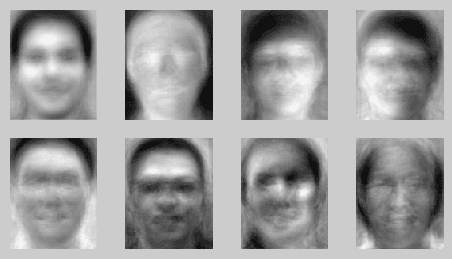| Above, you can see 8 of the eigenvectors
from the 201 face dataset. The eigenvectors can be thought of the most
prominent directions in which the images vary. The first eigenvector is
the average of all the faces. For this dataset, the properties captured
by the eigenvectors can be described. The second eigenvector captures the
overall brightness of the face in the picture. The third and forth capture
direction from which the face was illuminated. The fourth captures a bit
of face shape.
The rest of the eigenvectors (there are
201 of them) continue to capture more subtle details. The eigenvectors
are ordered by the amount that the data is distributed by their direction.
The eigenvectors are obtained by a Singular
Value Decomposition (SVD). From these, a set of vectors can be created
which provide a basis for the dataset. Each image is a vector in 15,400
dimensions (140 x 110 pixels). The basis, created by taking the difference
of each eigenvector (2 thru 201) with the first eigenvector, is of only
200 dimensions.
A distance can be calculated between each
of the 201 images in this 200 dimensional basis. Then, a spring mass system
can be constructed, such that a spring between each face has a rest length
equal to the distance between the faces.
The spring mass system can be forced into
only two dimensions, so that we may look at it easily. To do this, each
face is given a random starting position, and then the spring mass system
allowed to bounce around until it comes to a relaxed and stable state.
To the right you can see a plot of the
spring mass system positions as they converge to a stable system. |

The convergence of the spring mass
system for 16 images
|
|


